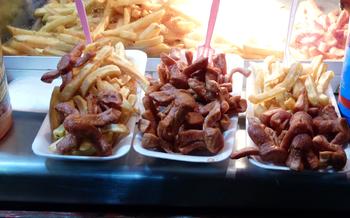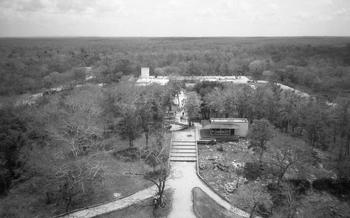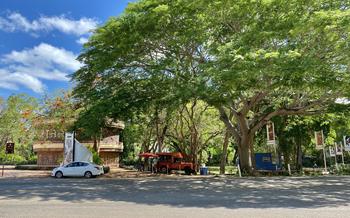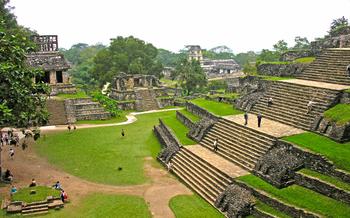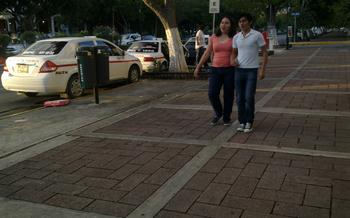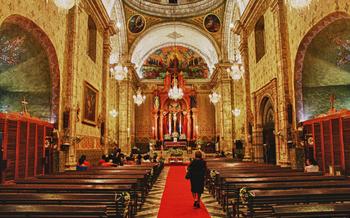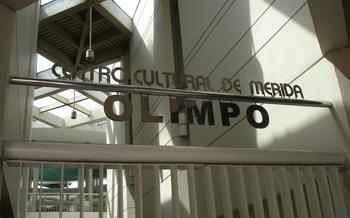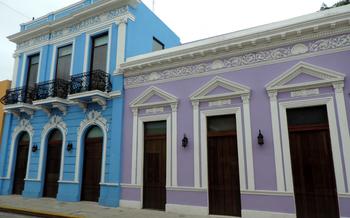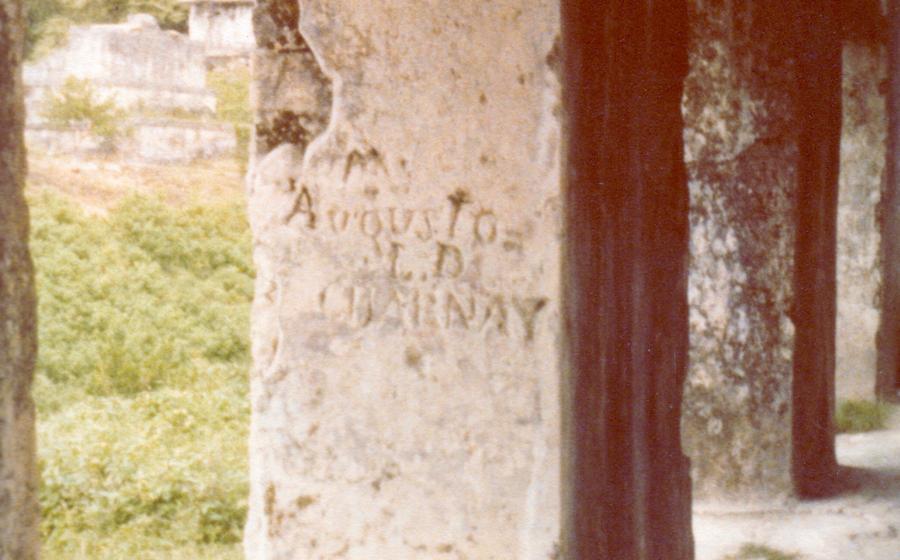
Lacanjá Chansayab Village
- History of Lacanjá Chansayab Village
- Cultural Significance
- Community Life:
- Natural Surroundings
- Lacanja Chansayab's Ecosystem
- Visiting the Village
- Eco-Tourism Opportunities:
- Exploring Mayan Legacy
- Authentic Mayan Cuisine
- Unique Handicrafts
- Participatory Tourism
- Supporting Local Economy
- Planning Your Visit
- Respecting Local Customs
- Insider Tip: Fiesta de San Juan
History of Lacanjá Chansayab Village
Lacanjá Ch, boasts a rich and storied past deeply rooted in the ancient Mayan civilization. The village's origins can be traced back to the Classic Period of Mayan history, when it served as a crucial trade and cultural center. However, the arrival of Spanish colonizers in the 16th century brought significant disruptions to the Mayan way of life, forcing many communities, including Lacanjá Chansayab, to relocate and adapt to the new colonial order.
In the mid-19th century, the Caste War of 1847 further impacted the village's history. This bloody conflict, which pitted the Maya against the ruling class of European descent, led to the abandonment of Lacanjá Chansayab and the scattering of its inhabitants into the surrounding forests. It wasn't until the early 20th century that the community was reestablished in its current location, as the descendants of the original Maya settlers returned to their ancestral lands.
Today, Lacanjá Chansayab stands as a testament to the resilience and perseverance of the Mayan people. The village has successfully preserved its unique cultural identity while embracing modern-day developments, creating a harmonious blend of tradition and progress. Visitors to Lacanjá Chansayab are welcomed into a vibrant community that proudly showcases its rich heritage through its traditions, customs, and profound connection to the natural world.
Cultural Significance
The Lacanjá Chansayab Village is a melting pot of ancient Mayan traditions and customs that have been passed down through generations. The community's language, known as Lacandon Maya, is a living testament to their linguistic heritage, with dialects that vary from family to family. Their traditional attire, adorned with intricate embroidery and vibrant colors, showcases their artistic prowess and connection to nature.
The women of the village are renowned for their weaving skills, creating beautiful textiles that are both functional and aesthetically pleasing. These textiles, often featuring intricate designs and patterns, hold cultural and historical significance, representing the village's identity and unique heritage.
Community Life:
The people of Lacanjá Chansayab lead a life rooted in simplicity and deep connection with nature. Subsistence farming is the backbone of their economy, with families cultivating maize, beans, and other crops on small plots of land. The community also raises animals such as chickens, pigs, and cattle. These traditional methods have ensured food security while preserving the natural balance of their environment.
Community gatherings and festivals hold a special place in the cultural fabric of Lacanjá Chansayab. These events bring people together to celebrate important occasions, share stories and experiences, and strengthen their bonds of unity. Traditional music, dance, and storytelling are integral parts of these festivities, adding a vibrant and joyful atmosphere.
Handicrafts and local products crafted with love and precision are another crucial aspect of life in Lacanjá Chansayab. Women are skilled weavers, creating beautiful textiles that adorn traditional clothing and accessories. Men excel in woodworking, crafting intricate sculptures that reflect their connection to nature and Mayan symbolism. These handmade items serve as a testament to the artistic heritage of the community and provide a source of income through local markets and tourism.
Natural Surroundings
The Lacanjá Chansayab village is nestled in a lush rainforest ecosystem, teeming with biodiversity. The village's natural surroundings offer visitors the opportunity to explore the diverse flora and fauna of the region. Majestic trees, vibrant flowers, and exotic birds create a vibrant tapestry of life.
The rainforest surrounding the village is a crucial habitat for various endangered species, such as the jaguar, howler monkeys, and scarlet macaws. Visitors can partake in guided nature walks, led by knowledgeable local guides, to spot these magnificent creatures in their natural habitat.
The community actively engages in sustainable practices to protect and preserve the delicate ecosystem. They have implemented conservation initiatives, such as reforestation programs and wildlife corridors, to mitigate the impact of human activities on the environment.
By visiting the Lacanjá Chansayab village, you not only immerse yourself in the rich Mayan culture but also contribute to the preservation of a unique and biodiverse rainforest ecosystem.
Lacanja Chansayab's Ecosystem
The Lacanjá Chansayab village is located within the Lacanja Chansayab protected area, part of the Maya Biosphere Reserve. It supports a rich biodiversity, including tropical rainforests, rivers, and waterfalls. The conservation efforts of the community have significantly contributed to preserving the fragile ecosystem and its diverse flora and fauna.
The village and its surrounding rainforest provide a haven for various animal and plant species. Howler monkeys, spider monkeys, toucans, and jaguars are commonly spotted in the region. The lush vegetation consists of towering mahogany trees, exotic orchids, and a diverse array of medicinal plants.
The community actively engages in sustainable practices to protect the environment. They collaborate with conservation organizations to monitor and protect the wildlife within the reserve. Furthermore, the community's traditional knowledge of medicinal plants contributes to the preservation of traditional healing practices and the conservation of the rainforest's medicinal flora.
Visiting the Village
When visiting the Lacanjá Chansayab Village, it is essential to practice respectful tourism. Guided tours are available, providing visitors with a deeper understanding of the community's history, culture, and traditions. These tours are often led by local guides who share their knowledge and insights, allowing visitors to immerse themselves in the authentic Mayan experience.
Supporting local initiatives is another way to contribute to the village's sustainability. Visitors can purchase handicrafts and local products, such as textiles, wood carvings, and traditional foods, directly from the artisans and farmers. This not only supports the local economy but also encourages the preservation of traditional skills and practices.
Eco-Tourism Opportunities:
Lacanja Chansayab offers a unique opportunity to combine adventure and nature conservation. Embark on guided hikes through the rainforest, marveling at the diverse flora and fauna. Spot exotic birds, reptiles, and mammals in their natural habitat, capturing stunning photographs of the vibrant ecosystem. Immerse yourself in the serenity of the rainforest during a camping trip, enjoying the tranquility of nature's embrace under the starlit sky. Opt for sustainable lodging options that contribute to the village's conservation efforts, ensuring a responsible and eco-conscious travel experience.
Exploring Mayan Legacy
Lacanjá Chansayab village is a treasure trove of Mayan history and culture. Immerse yourself in the rich legacy of the ancient Maya by exploring the village's surroundings. Discover ancient ruins and archaeological sites that tell the story of a civilization that thrived in this region for centuries. Learn about their intricate belief systems, their impressive architectural achievements, and their connection to the natural world.
Participate in cultural heritage workshops and demonstrations to gain a deeper understanding of Mayan traditions and customs. Watch skilled artisans create intricate textiles, carve wooden sculptures, or demonstrate traditional cooking techniques. These workshops offer a unique opportunity to connect with the local community and learn firsthand about their ancestral knowledge.
Engage in storytelling sessions with village elders who share tales of Mayan mythology, legends, and historical events passed down through generations. These stories provide a glimpse into the vibrant cultural heritage of the Maya and their enduring connection to the land and their ancestors.
Authentic Mayan Cuisine
In Lacanjá Chansayab, the culinary traditions of the Mayan ancestors are still alive and thriving. The community takes pride in preserving their unique flavors and recipes, which have been passed down through generations. Visitors can indulge in authentic Mayan cuisine, prepared using fresh, local ingredients and traditional cooking methods.
The culinary scene in Lacanjá Chansayab revolves around staple crops such as corn, beans, and squash. These ingredients are transformed into a variety of dishes, including flavorful stews, hearty soups, and handmade tortillas. Visitors can savor the distinct taste of Mayan spices and herbs, which add a unique depth of flavor to each dish.
A must-try delicacy is the "pibil," a traditional Mayan dish made with pork or chicken slow-cooked in banana leaves. Another popular dish is "panuchos," a fried tortilla topped with black beans, shredded turkey, and a tangy tomato sauce. For a sweet treat, visitors can indulge in freshly made "dulces," or traditional Mayan desserts, made with natural sweeteners like honey and piloncillo.
To fully immerse themselves in the culinary traditions of Lacanjá Chansayab, visitors can participate in cooking demonstrations and workshops led by local Mayan women. These hands-on experiences offer a glimpse into the techniques and recipes that have been passed down for centuries. Visitors can learn to make traditional dishes, grind corn using a metate, and prepare flavorful sauces using fresh ingredients from the rainforest.
By savoring the authentic flavors of Mayan cuisine in Lacanjá Chansayab, visitors not only satisfy their taste buds but also connect with the cultural heritage and traditions of this vibrant community.
Unique Handicrafts
Lacanjá Chansayab Village is renowned for its vibrant and intricate handicrafts, which showcase the creativity and skills of the local artisans. The community has a long tradition of textile weaving and embroidery, with women expertly crafting colorful textiles using traditional backstrap looms. Visitors can admire the intricate patterns and designs, which often depict scenes from everyday life, nature, or Mayan mythology.
The village is also known for its wood carvings and sculptures, which are meticulously crafted from local woods. Artisans use hand tools to create intricate figures, masks, and other decorative items that reflect the cultural heritage of the community. The use of natural dyes and organic materials adds to the authenticity and beauty of these handicrafts.
Exploring the local market or visiting artisans' workshops provides a unique opportunity to learn about the techniques and traditions involved in creating these beautiful handicrafts. Visitors can purchase these one-of-a-kind pieces as souvenirs, supporting the local economy and preserving the cultural heritage of the village.
Participatory Tourism
Lacanjá Chansayab embraces participatory tourism, an ethical and sustainable approach that prioritizes the involvement and empowerment of the local community. By actively engaging in community-based projects and volunteering opportunities, visitors can contribute to the village's development while gaining invaluable insights into Mayan culture and traditions. From participating in traditional farming activities to teaching English to local children, there are numerous ways to connect with the community and make a meaningful impact. These participatory experiences not only provide visitors with a unique and immersive cultural experience but also foster a sense of mutual respect, understanding, and cooperation between tourists and the local people.
Supporting Local Economy
Tourism plays a pivotal role in the economic well-being of the Lacanjá Chansayab community. By supporting local initiatives, visitors can contribute directly to the preservation of their cultural heritage and way of life. Several opportunities exist for travelers to engage in sustainable tourism practices that benefit the community.
One way to support the local economy is to purchase authentic handicrafts and products directly from artisans and vendors. These items, such as handwoven textiles, wood carvings, and traditional clothing, are crafted with care and skill, reflecting the unique artistic traditions of the Lacanjá people. By purchasing these products, visitors not only acquire beautiful souvenirs but also help sustain the livelihoods of local artisans.
Fair trade practices are an essential aspect of supporting the local economy in Lacanjá Chansayab. Visitors can seek out products that adhere to fair trade principles, ensuring that artisans receive a fair wage for their work and that working conditions are safe and ethical. By choosing fair trade products, travelers can contribute to the economic empowerment of the community and promote social justice.
Moreover, sustainable tourism initiatives are actively promoted in Lacanjá Chansayab. These initiatives aim to minimize the environmental impact of tourism while maximizing its benefits for the community. Visitors can support these initiatives by staying in locally-owned guesthouses or eco-lodges, participating in guided tours led by local guides, and respecting the natural environment by avoiding littering and following designated trails.
By embracing these sustainable tourism practices, visitors can help ensure that the tourism industry in Lacanjá Chansayab is ethical, responsible, and beneficial to the community.
Planning Your Visit
When to Visit: The dry season from November to April offers pleasant weather for exploring the village and its surroundings. However, the rainy season (May to October) brings lush greenery and vibrant wildlife.
Accommodations: Basic accommodations are available in the village, ranging from traditional Mayan-style huts to comfortable guesthouses. For a more immersive experience, consider staying with a local family through homestays or community-based tourism initiatives.
Transportation: Palenque is well-connected by road, with regular buses and shuttles departing from nearby cities like San Cristóbal de las Casas and Mérida. Once in Palenque, you can take a local bus or taxi to reach Lacanjá Chansayab, which takes about an hour.
Packing Essentials: Pack comfortable clothing suitable for warm weather and outdoor activities. Insect repellent, sunscreen, and a hat are essential. Remember to bring sturdy footwear for hiking and exploring the rainforest trails.
Cultural Sensitivity: As visitors, it is crucial to be respectful of the local culture and traditions. Dress modestly, ask permission before taking photographs, and avoid disturbing religious ceremonies or sacred sites. Learning a few basic Spanish phrases shows respect and helps you connect with the community.
Respecting Local Customs
When visiting the Lacanjá Chansayab village, it is crucial to be mindful of the local customs and traditions to ensure a respectful and enriching experience. Dressing appropriately is essential, as revealing or overly casual clothing may be considered disrespectful. It is always advisable to ask permission before taking photographs, as some villagers may feel uncomfortable having their picture taken. When interacting with the community members, it is important to be polite and respectful, and to avoid asking intrusive or personal questions. Remember that the villagers are welcoming and eager to share their culture, but it is essential to approach them with respect and understanding.
Insider Tip: Fiesta de San Juan
Immerse yourself in the vibrant colors and rich traditions of the Mayan culture at the annual "Fiesta de San Juan" (Festival of Saint John). Held every June, this grand celebration honors the patron saint of the village and showcases the best of Lacanjá Chansayab's cultural heritage. Witness traditional dances, listen to enchanting music, and savor delicious local cuisine as the community comes together to celebrate their patron saint. It's a unique opportunity to experience the authentic Mayan spirit and create lasting memories in this enchanting village.
